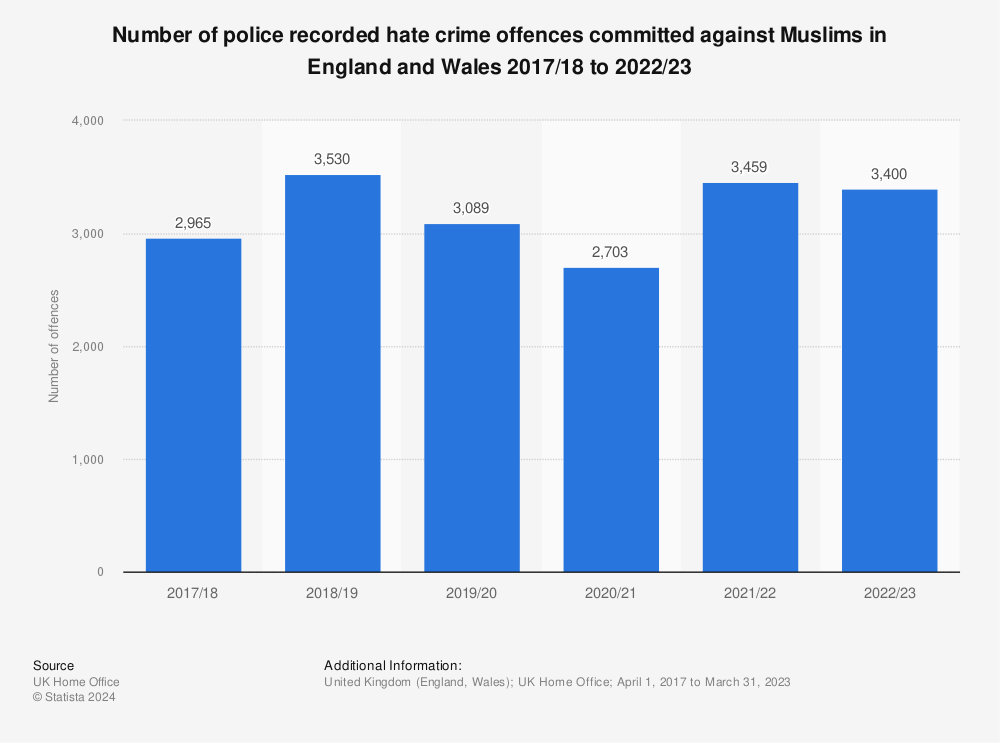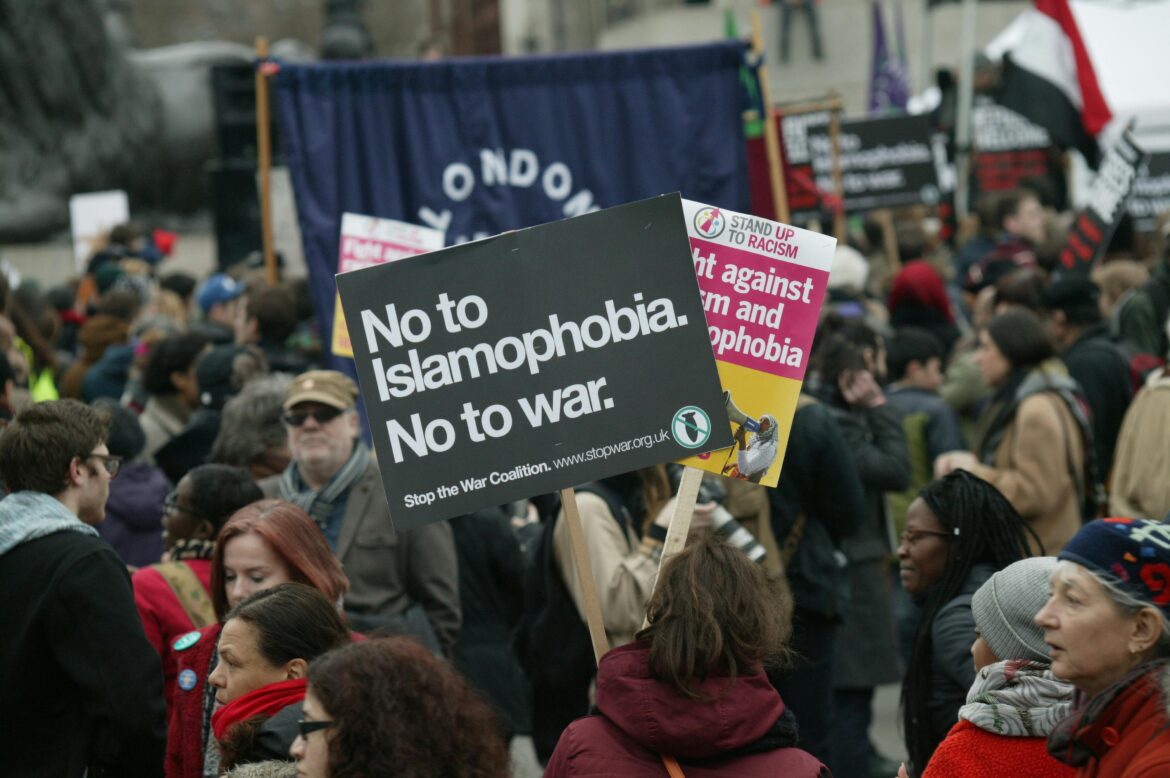Islamophobia: Why It Persists
What drives Islamophobia, and why does it remain entrenched in modern society? Or rather, why does it persist?
The Office of the United Nations High Commissioner for Human Rights defines islamophobia as:
“A fear, prejudice and hatred of Muslims or non-Muslim individuals that leads to provocation, hostility and intolerance by means of threatening, harassment, abuse, incitement and intimidation of Muslims and non-Muslims, both in the online and offline world. Motivated by institutional, ideological, political and religious hostility that transcends into structural and cultural racism which targets the symbols and markers of a being a Muslim.”
Jad Mohsen, 21, who is a student and a devout Muslim, reflects on his experiences with islamophobia while still in school:
Jad’s story is all too common in cases with islamophobia, with the example of being asked, just because he was muslim, if he was “part of ISIS” by his classmate.
However, the truth of the matter is that Islamophobia, a very persistent social problem of the 21st century, has shown almost no signs of slowing down.
What’s even more alarming is that, in a recent study conducted by The Home Office, Islamophobic hate incidents have steadily risen year on year, and have shown no signs of slowing down:

Statista
So why is this the case?
The picture is not black and white, its in fact an intricate web of misunderstanding, ranging from a lack of knowledge on Islamic concepts, the far-right media, and the lack of understanding as to what extremist groups are, and how they are not representative of Islam in its entirety.
Jihad: A Misunderstood Concept
In a lot of anti-Islamic rhetoric, one of the most frequently talked about concepts is that of Jihad. Most of the time, Jihad is often misunderstood as a pretext to expansionism in direct correlation to the perceived “violent nature” of Islam, in that it is a religion of conquest and subjugation.
However, this could not be further from the truth.
Jihad, in Arabic means: “struggle” or “surviving”, and has multiple dimensions to its application in a believers life.
Abu Tayeb Khairdeen, Chief Executive Officer at Islamic Diversity Centre in Newcastle Upon Tyne, explains what Jihad is, and how its definition is skewed.
Abu Tayeb Khairdeen talks about the concept of Jihad
Historically, Jihad has often been understood as a defensive struggle to protect Muslim communities, particularly when pagan Arabs in the 7th century sought to attack them with the intent of extermination.
It was therefore deemed necessary to defend against such aggression. Make no mistake however, Jihad is only permitted under specific conditions, primarily when a community is under attack or facing oppression.
Much of Islamic teaching imposes strict ethical guidelines towards Jihad, prohibiting harm to civilians, destruction of property and unjust aggression.
In a more intricate way, Jihad is commonly used in a spiritual sense, often known as “Greater Jihad”. This application of jihad refers to the internalised effort of a Muslim to overcome sin, cultivate self-discipline and live according to Islamic principles; which is emphasised a lot in Sufi and Ahmadiyya circles.
In this sense, Jihad looks upon self-improvement accompanied by moral integrity for followers of Islam. All this is aimed at cultivating a deeper, more intricate connection with God.
Jihad can also be used in a social context, in that Jihad focuses on striving for justice and contributing to society in a positive manner; such as fighting poverty which is in itself a battle. Therefore of we see the application of Jihad here as a “fight” against poverty, we can definitely attribute a more positive connotation to it.
So, why does Jihad still carry an association with evil for many people?
Far-Right Media Feeds Into The Problem
One of the key components in effectively marginalising different faiths and cultures has always been through the utilisation of media.
Will Cracknell, a social media expert in an article for Pan Macmillan elaborates:
We can begin to understand this far-right phenomenon through examining the exploitation of social media – including platforms such as YouTube – by radicals who portray unchallenged false narratives as real life. It is curious that when discussing Islamist fundamentalist terrorism, it is often demanded that hate-preachers responsible for radicalisation in mosques or on the internet be condemned, identified and held to account – “Where are the community leaders?” you will have seen breakfast TV presenters ask.
Media in the 1930s for example, was utilised by the Nazis to great effect in bringing marginalisation and building hatred towards the Jewish percentage of the Population.
Similarly, X (formerly twitter) draws a substantially similar parallel.
It has simply never been easier to spread misinformation than it is in 2024. In its basic utilisation, the pace in which misinformation spreads supersedes the effect of old-fashioned propaganda based upon false, cherry-picked arguments to suit a specific narrative.
Unregulated content such as that of which is found on X, leads to far-right parties such as Britain first, (which have at present 122K followers,) and other Extreme right wing accounts to regularly post content that targets Muslims.
This type of posting causes a them vs us feeling, and fast-tracks societal divide. This leads, in some cases, to violent action.
The perfect example of this is the August riots seen in the UK, due to false rumours spreading that the Southport perpetrator was an illegal Muslim immigrant. Much of that hatred towards Muslim migrants was built by content such as the tweet above, portraying them as inherently violent. History has shown us what this can lead towards.
We need not underestimate how media accentuates the feeling of anger and human emotion. Much like the Nazis with the Jews, it’s easy for a right wing extremist to put the blame of society’s problems on the Muslim sect of the population.
Not All Muslims Are Terrorists
Whenever reports of a stabbing or terrorist act emerge, and later gets linked to organisations like Al-Qaeda or ISIS, a reinforcement of prebuilt assumptions of Muslims surface, with labels like “islamists” and “terrorists” are tossed about.
However, what lacks in common knowledge is that the groups mentioned are vastly sectarian, and not representative of Muslims. Many Muslim-majority countries actively oppose extremist groups and work tirelessly to counter their influence.
The image below features a mosque in Shingal, Iraq, symbolising the challenges faced by Muslim communities in their fight against extremism.

Al Qaeda and other similar terrorist organisations both fall under a branch of radical ideology known as Salafi Islam. Salafism is very sectarian and not followed by the vast majority of Muslims. When it comes to groups like ISIS, Salafi ideology is radicalised into terrorism. As a demographic, only >10% of Muslims actually conform to the ideology.
The Week magazine, in its article about the Salafi, defines them as:
Fundamentalists who believe in a return to the original political and moral practices of Islam. The word “Salafi” comes from the Arabic phrase, “al-Salaf al-Salih” , which refers to the first three generations of Muslims (starting with the Companions of the Prophet), otherwise known as the Pious Predecessors, or “righteous ancestors”.
In the second half of the last century, Salafist ideas began inspiring movements including the Muslim Brotherhood in Egypt, Jordan and Syria. Salafists have also formed militant groups with the aim of establishing an Islamic state by force – Salafism and Salafi Jihadism are the core beliefs of the Islamic State (Isis).
While this serves as a very broad definition of Salafi Islam, to properly understand how they came about this idea, we need to examine their method of interpretation of Islam, as this is crucial in building our understanding of them but also to avoid generalisations.
Britannica Explains that:
Salafis (followers of the al-salaf al-ṣāliḥ) are characterized by the prioritization of the Qurʾān and the Sunnah as the fundamental uṣūl al-fiqh, or sources of Islamic law.
Other traditional tools that were developed to resolve issues not addressed directly by scripture, such as analogical reasoning (qiyās) and scholarly consensus (ijmāʿ), are only applicable when plainly rooted in the Qurʾān and the Sunnah. Salafis thus reject devoted adherence (taqlīd) to traditional schools of jurisprudence and hold literalist interpretations of scripture.
What this basically means is that, unlike the majority of Muslims, Salafis interpret scripture in a literalist sense, which is according to the Oxford English Dictionary: “A person who translates a passage or work literally. Also: one who insists on or adheres to literal interpretation of a text, statement, etc.”
This is far from how the majority of Shi’a or Sunni Muslims interpret scripture. This is fundamental if we are to distinguish between the radicals and other practicing Muslims.
Therefore, if we are to create a more equal and fair society for everyone, we must first acknowledge what divides us. Misinformation or generalisation, due to one groups actions leads to divides that we cannot accommodate in our fast changing society in the 21st century. These variables lead to strong divide which accentuates prejudice. So before we attach labels to specific groups or communities, we must first look into perhaps what makes them think the way they do, and what influences their actions
What are your experiences on Islamophobia? What are your thoughts on it? Let us know in the comments below



